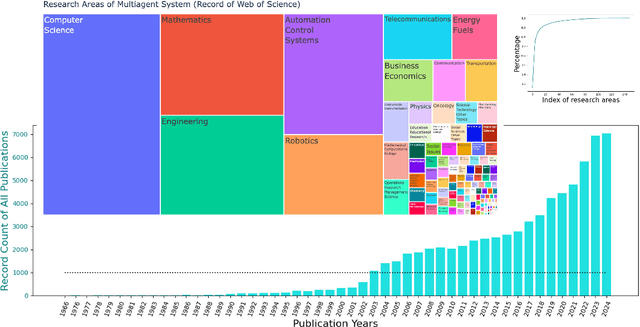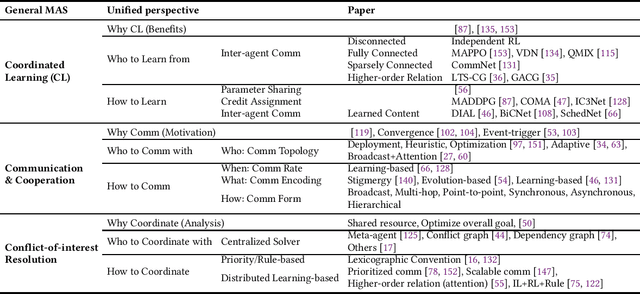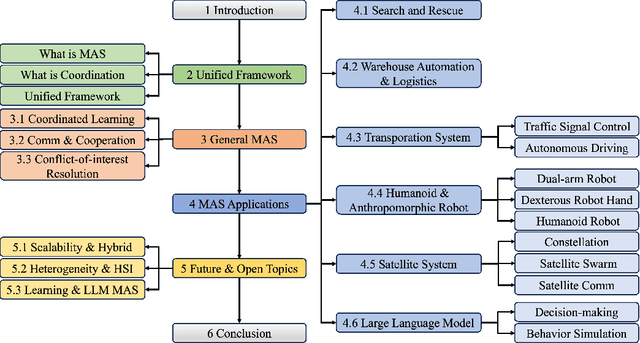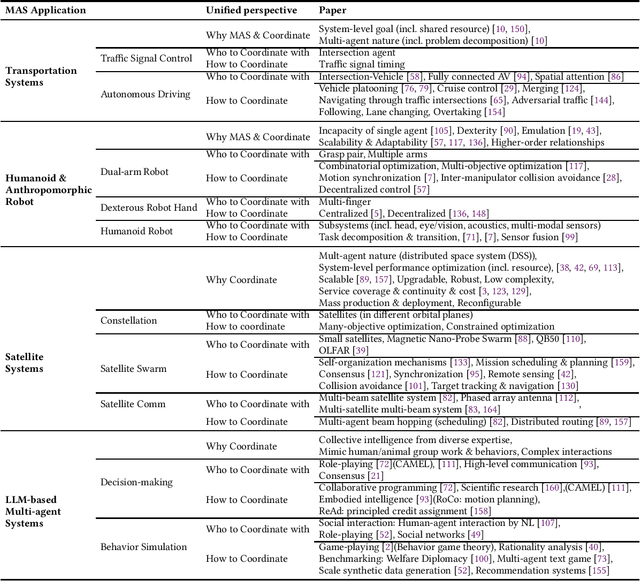Yijun Yang
CECT-Mamba: a Hierarchical Contrast-enhanced-aware Model for Pancreatic Tumor Subtyping from Multi-phase CECT
Sep 16, 2025Abstract:Contrast-enhanced computed tomography (CECT) is the primary imaging technique that provides valuable spatial-temporal information about lesions, enabling the accurate diagnosis and subclassification of pancreatic tumors. However, the high heterogeneity and variability of pancreatic tumors still pose substantial challenges for precise subtyping diagnosis. Previous methods fail to effectively explore the contextual information across multiple CECT phases commonly used in radiologists' diagnostic workflows, thereby limiting their performance. In this paper, we introduce, for the first time, an automatic way to combine the multi-phase CECT data to discriminate between pancreatic tumor subtypes, among which the key is using Mamba with promising learnability and simplicity to encourage both temporal and spatial modeling from multi-phase CECT. Specifically, we propose a dual hierarchical contrast-enhanced-aware Mamba module incorporating two novel spatial and temporal sampling sequences to explore intra and inter-phase contrast variations of lesions. A similarity-guided refinement module is also imposed into the temporal scanning modeling to emphasize the learning on local tumor regions with more obvious temporal variations. Moreover, we design the space complementary integrator and multi-granularity fusion module to encode and aggregate the semantics across different scales, achieving more efficient learning for subtyping pancreatic tumors. The experimental results on an in-house dataset of 270 clinical cases achieve an accuracy of 97.4% and an AUC of 98.6% in distinguishing between pancreatic ductal adenocarcinoma (PDAC) and pancreatic neuroendocrine tumors (PNETs), demonstrating its potential as a more accurate and efficient tool.
HRVVS: A High-resolution Video Vasculature Segmentation Network via Hierarchical Autoregressive Residual Priors
Jul 30, 2025



Abstract:The segmentation of the hepatic vasculature in surgical videos holds substantial clinical significance in the context of hepatectomy procedures. However, owing to the dearth of an appropriate dataset and the inherently complex task characteristics, few researches have been reported in this domain. To address this issue, we first introduce a high quality frame-by-frame annotated hepatic vasculature dataset containing 35 long hepatectomy videos and 11442 high-resolution frames. On this basis, we propose a novel high-resolution video vasculature segmentation network, dubbed as HRVVS. We innovatively embed a pretrained visual autoregressive modeling (VAR) model into different layers of the hierarchical encoder as prior information to reduce the information degradation generated during the downsampling process. In addition, we designed a dynamic memory decoder on a multi-view segmentation network to minimize the transmission of redundant information while preserving more details between frames. Extensive experiments on surgical video datasets demonstrate that our proposed HRVVS significantly outperforms the state-of-the-art methods. The source code and dataset will be publicly available at \href{https://github.com/scott-yjyang/xx}{https://github.com/scott-yjyang/HRVVS}.
Boosting Vulnerability Detection of LLMs via Curriculum Preference Optimization with Synthetic Reasoning Data
Jun 09, 2025Abstract:Large language models (LLMs) demonstrate considerable proficiency in numerous coding-related tasks; however, their capabilities in detecting software vulnerabilities remain limited. This limitation primarily stems from two factors: (1) the absence of reasoning data related to vulnerabilities, which hinders the models' ability to capture underlying vulnerability patterns; and (2) their focus on learning semantic representations rather than the reason behind them, thus failing to recognize semantically similar vulnerability samples. Furthermore, the development of LLMs specialized in vulnerability detection is challenging, particularly in environments characterized by the scarcity of high-quality datasets. In this paper, we propose a novel framework ReVD that excels at mining vulnerability patterns through reasoning data synthesizing and vulnerability-specific preference optimization. Specifically, we construct forward and backward reasoning processes for vulnerability and corresponding fixed code, ensuring the synthesis of high-quality reasoning data. Moreover, we design the triplet supervised fine-tuning followed by curriculum online preference optimization for enabling ReVD to better understand vulnerability patterns. The extensive experiments conducted on PrimeVul and SVEN datasets demonstrate that ReVD sets new state-of-the-art for LLM-based software vulnerability detection, e.g., 12.24\%-22.77\% improvement in the accuracy. The source code and data are available at https://github.com/Xin-Cheng-Wen/PO4Vul.
WALL-E 2.0: World Alignment by NeuroSymbolic Learning improves World Model-based LLM Agents
Apr 22, 2025Abstract:Can we build accurate world models out of large language models (LLMs)? How can world models benefit LLM agents? The gap between the prior knowledge of LLMs and the specified environment's dynamics usually bottlenecks LLMs' performance as world models. To bridge the gap, we propose a training-free "world alignment" that learns an environment's symbolic knowledge complementary to LLMs. The symbolic knowledge covers action rules, knowledge graphs, and scene graphs, which are extracted by LLMs from exploration trajectories and encoded into executable codes to regulate LLM agents' policies. We further propose an RL-free, model-based agent "WALL-E 2.0" through the model-predictive control (MPC) framework. Unlike classical MPC requiring costly optimization on the fly, we adopt an LLM agent as an efficient look-ahead optimizer of future steps' actions by interacting with the neurosymbolic world model. While the LLM agent's strong heuristics make it an efficient planner in MPC, the quality of its planned actions is also secured by the accurate predictions of the aligned world model. They together considerably improve learning efficiency in a new environment. On open-world challenges in Mars (Minecraft like) and ALFWorld (embodied indoor environments), WALL-E 2.0 significantly outperforms existing methods, e.g., surpassing baselines in Mars by 16.1%-51.6% of success rate and by at least 61.7% in score. In ALFWorld, it achieves a new record 98% success rate after only 4 iterations.
GTR: Guided Thought Reinforcement Prevents Thought Collapse in RL-based VLM Agent Training
Mar 11, 2025Abstract:Reinforcement learning with verifiable outcome rewards (RLVR) has effectively scaled up chain-of-thought (CoT) reasoning in large language models (LLMs). Yet, its efficacy in training vision-language model (VLM) agents for goal-directed action reasoning in visual environments is less established. This work investigates this problem through extensive experiments on complex card games, such as 24 points, and embodied tasks from ALFWorld. We find that when rewards are based solely on action outcomes, RL fails to incentivize CoT reasoning in VLMs, instead leading to a phenomenon we termed thought collapse, characterized by a rapid loss of diversity in the agent's thoughts, state-irrelevant and incomplete reasoning, and subsequent invalid actions, resulting in negative rewards. To counteract thought collapse, we highlight the necessity of process guidance and propose an automated corrector that evaluates and refines the agent's reasoning at each RL step. This simple and scalable GTR (Guided Thought Reinforcement) framework trains reasoning and action simultaneously without the need for dense, per-step human labeling. Our experiments demonstrate that GTR significantly enhances the performance and generalization of the LLaVA-7b model across various visual environments, achieving 3-5 times higher task success rates compared to SoTA models with notably smaller model sizes.
Multi-Agent Coordination across Diverse Applications: A Survey
Feb 21, 2025



Abstract:Multi-agent coordination studies the underlying mechanism enabling the trending spread of diverse multi-agent systems (MAS) and has received increasing attention, driven by the expansion of emerging applications and rapid AI advances. This survey outlines the current state of coordination research across applications through a unified understanding that answers four fundamental coordination questions: (1) what is coordination; (2) why coordination; (3) who to coordinate with; and (4) how to coordinate. Our purpose is to explore existing ideas and expertise in coordination and their connections across diverse applications, while identifying and highlighting emerging and promising research directions. First, general coordination problems that are essential to varied applications are identified and analyzed. Second, a number of MAS applications are surveyed, ranging from widely studied domains, e.g., search and rescue, warehouse automation and logistics, and transportation systems, to emerging fields including humanoid and anthropomorphic robots, satellite systems, and large language models (LLMs). Finally, open challenges about the scalability, heterogeneity, and learning mechanisms of MAS are analyzed and discussed. In particular, we identify the hybridization of hierarchical and decentralized coordination, human-MAS coordination, and LLM-based MAS as promising future directions.
Effective Black-Box Multi-Faceted Attacks Breach Vision Large Language Model Guardrails
Feb 09, 2025



Abstract:Vision Large Language Models (VLLMs) integrate visual data processing, expanding their real-world applications, but also increasing the risk of generating unsafe responses. In response, leading companies have implemented Multi-Layered safety defenses, including alignment training, safety system prompts, and content moderation. However, their effectiveness against sophisticated adversarial attacks remains largely unexplored. In this paper, we propose MultiFaceted Attack, a novel attack framework designed to systematically bypass Multi-Layered Defenses in VLLMs. It comprises three complementary attack facets: Visual Attack that exploits the multimodal nature of VLLMs to inject toxic system prompts through images; Alignment Breaking Attack that manipulates the model's alignment mechanism to prioritize the generation of contrasting responses; and Adversarial Signature that deceives content moderators by strategically placing misleading information at the end of the response. Extensive evaluations on eight commercial VLLMs in a black-box setting demonstrate that MultiFaceted Attack achieves a 61.56% attack success rate, surpassing state-of-the-art methods by at least 42.18%.
Evaluating and Improving Graph to Text Generation with Large Language Models
Jan 24, 2025Abstract:Large language models (LLMs) have demonstrated immense potential across various tasks. However, research for exploring and improving the capabilities of LLMs in interpreting graph structures remains limited. To address this gap, we conduct a comprehensive evaluation of prompting current open-source LLMs on graph-to-text generation tasks. Although we explored the optimal prompting strategies and proposed a novel and effective diversity-difficulty-based few-shot sample selection method, we found that the improvements from tuning-free approaches were incremental, as LLMs struggle with planning on complex graphs, particularly those with a larger number of triplets. To further improve LLMs in planning with graph sequences and grounding in truth, we introduce a new graph-to-text dataset, PlanGTG, annotated with two sub-tasks: reordering and attribution. Through extensive automatic and human evaluations, we demonstrate significant improvements in the quality of generated text from both few-shot learning and fine-tuning perspectives using the PlanGTG dataset. Our study paves the way for new research directions in graph-to-text generation. PlanGTG datasets can be found in https://github.com/probe2/kg_text.
System-2 Mathematical Reasoning via Enriched Instruction Tuning
Dec 24, 2024Abstract:Solving complex mathematical problems via system-2 reasoning is a natural human skill, yet it remains a significant challenge for current large language models (LLMs). We identify the scarcity of deliberate multi-step reasoning data as a primary limiting factor. To this end, we introduce Enriched Instruction Tuning (EIT), a method that enriches existing human-annotated mathematical datasets by synergizing human and AI feedback to create fine-grained reasoning trajectories. These datasets are then used to fine-tune open-source LLMs, enhancing their mathematical reasoning abilities without reliance on any symbolic verification program. Concretely, EIT is composed of two critical steps: Enriching with Reasoning Plan (ERP) and Enriching with Reasoning Step (ERS). The former generates a high-level plan that breaks down complex instructions into a sequence of simpler objectives, while ERS fills in reasoning contexts often overlooked by human annotators, creating a smoother reasoning trajectory for LLM fine-tuning. Unlike existing CoT prompting methods that generate reasoning chains only depending on LLM's internal knowledge, our method leverages human-annotated initial answers as ``meta-knowledge'' to help LLMs generate more detailed and precise reasoning processes, leading to a more trustworthy LLM expert for complex mathematical problems. In experiments, EIT achieves an accuracy of 84.1% on GSM8K and 32.5% on MATH, surpassing state-of-the-art fine-tuning and prompting methods, and even matching the performance of tool-augmented methods.
From An LLM Swarm To A PDDL-Empowered HIVE: Planning Self-Executed Instructions In A Multi-Modal Jungle
Dec 17, 2024



Abstract:In response to the call for agent-based solutions that leverage the ever-increasing capabilities of the deep models' ecosystem, we introduce Hive -- a comprehensive solution for selecting appropriate models and subsequently planning a set of atomic actions to satisfy the end-users' instructions. Hive operates over sets of models and, upon receiving natural language instructions (i.e. user queries), schedules and executes explainable plans of atomic actions. These actions can involve one or more of the available models to achieve the overall task, while respecting end-users specific constraints. Notably, Hive handles tasks that involve multi-modal inputs and outputs, enabling it to handle complex, real-world queries. Our system is capable of planning complex chains of actions while guaranteeing explainability, using an LLM-based formal logic backbone empowered by PDDL operations. We introduce the MuSE benchmark in order to offer a comprehensive evaluation of the multi-modal capabilities of agent systems. Our findings show that our framework redefines the state-of-the-art for task selection, outperforming other competing systems that plan operations across multiple models while offering transparency guarantees while fully adhering to user constraints.
 Add to Chrome
Add to Chrome Add to Firefox
Add to Firefox Add to Edge
Add to Edge